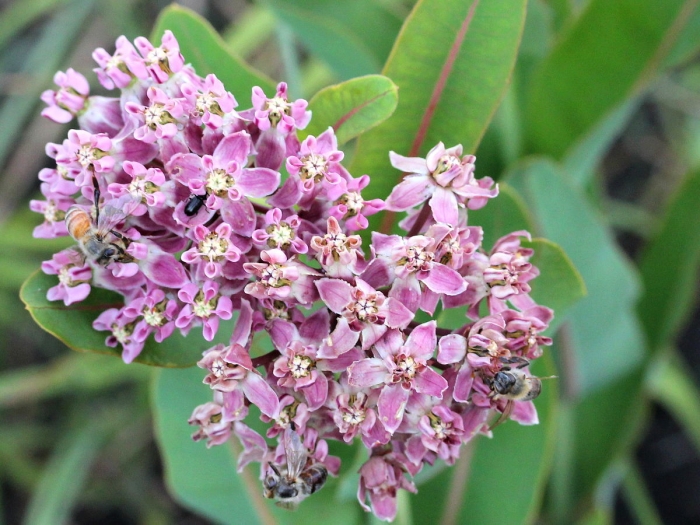Prairie Milkweed
(Asclepias sullivantii)
Prairie Milkweed (Asclepias sullivantii)
/
/

Peter Chen 2.0
CC BY 4.0
Image By:
Peter Chen 2.0
Recorded By:
Copyright:
CC BY 4.0
Copyright Notice:
Photo by: Peter Chen 2.0 | License Type: CC BY 4.0 | License URL: http://creativecommons.org/licenses/by/4.0/ | Rights Holder: Peter Chen 2.0 | Publisher: iNaturalist | Date Created: 2017-04-23T12:02:15-07:00 |

























Estimated Native Range
Summary
Asclepias sullivantii, commonly known as Prairie Milkweed, is a perennial herb that is native to tallgrass prairies and meadow ecosystems in the central United States and Ontario, Canada. It typically grows up to 3 feet tall from deep rhizomes and features upright stems with opposite, hairless, thick leaves that have wavy margins. From late spring to early summer, Prairie Milkweed produces showy, pale to deep pinkish-purple flowers in rounded umbels, which are highly attractive to pollinators. The plant is particularly noted for its role as a critical nectar source for various insects, including the monarch butterfly, which relies on milkweed species during its larval stage.
Prairie Milkweed is valued in cultivation for its ornamental flowers and its ability to attract and support wildlife, especially butterflies. It is used in native plant gardens, pollinator gardens, and restoration projects. This species prefers full sun to part shade and thrives in moist, well-drained soils. While it is adaptable to various soil types, it does best in rich loams. Gardeners should be aware that it can spread through rhizomes and may need to be managed to prevent unwanted spread. It is generally low-maintenance once established and is resistant to most pests and diseases. However, it can be susceptible to root rot in overly wet conditions.CC BY-SA 4.0
Prairie Milkweed is valued in cultivation for its ornamental flowers and its ability to attract and support wildlife, especially butterflies. It is used in native plant gardens, pollinator gardens, and restoration projects. This species prefers full sun to part shade and thrives in moist, well-drained soils. While it is adaptable to various soil types, it does best in rich loams. Gardeners should be aware that it can spread through rhizomes and may need to be managed to prevent unwanted spread. It is generally low-maintenance once established and is resistant to most pests and diseases. However, it can be susceptible to root rot in overly wet conditions.CC BY-SA 4.0
Plant Description
- Plant Type: Herb
- Height: 2-5 feet
- Width: 1-3 feet
- Growth Rate: Moderate
- Flower Color: Pink, Purple
- Flowering Season: Summer
- Leaf Retention: Deciduous
Growth Requirements
- Sun: Full Sun
- Water: Medium
- Drainage: Fast, Medium
Common Uses
Bee Garden, Bird Garden, Butterfly Garden, Deer Resistant, Drought Tolerant, Low Maintenance
Natural Habitat
Tallgrass prairies and meadow ecosystems
Other Names
Common Names: Smooth Milkweed, Sullivant’s Milkweed
Scientific Names: , Asclepias sullivantii, Asclepias sullivantii,
GBIF Accepted Name: